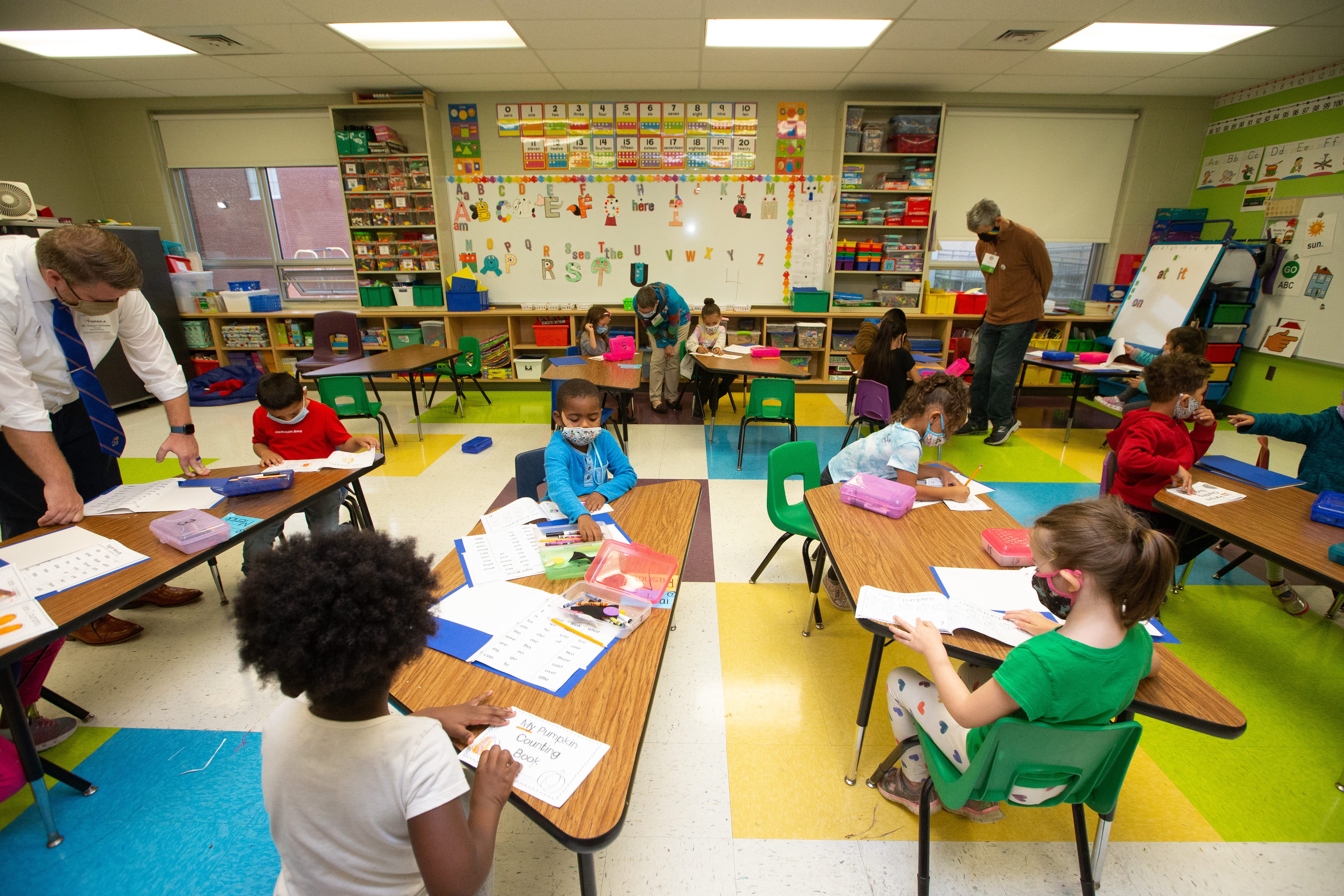Discover the Best Primary Science Tuition Singapore for Your Learning Journey
Discover the Best Primary Science Tuition Singapore for Your Learning Journey
Blog Article
A Comprehensive Guide to the Numerous Learning Approaches in Primary Scientific Research Direction
The expedition of varied knowing techniques in main scientific research guideline presents an opportunity for teachers to enhance trainee engagement and comprehension dramatically. By examining hands-on learning methods, inquiry-based methods, and joint approaches, we can recognize reliable practices that provide to numerous discovering designs. Additionally, the combination of innovation and separated instruction plays a vital duty in promoting an inclusive environment. Nonetheless, the inquiry continues to be: how can these approaches be properly applied in the classroom to optimize their influence? The answer depends on a better analysis of each approach and its implications for training scientific research.

Hands-On Discovering Methods
Hands-on discovering techniques play a crucial duty in primary scientific research direction, involving pupils in active exploration and testing. These approaches permit learners to interact straight with materials and sensations, promoting a much deeper understanding of scientific principles. By using manipulatives, designs, and real-life experiments, teachers produce an environment where pupils can observe, hypothesize, and test their concepts.
Such methods not just boost understanding however additionally grow vital thinking and analytical skills. When pupils take part in activities like developing easy makers, growing seeds, or performing chain reactions, they are encouraged to ask inquiries and look for responses with their own observations. This experiential method aids to debunk intricate scientific concepts, making them extra relatable and easily accessible.
Furthermore, hands-on discovering advertises partnership amongst peers, as pupils commonly work in groups to conduct experiments or share searchings for. This team effort not only enriches their learning experience but also creates necessary social skills. Ultimately, integrating hands-on methods in main scientific research guideline cultivates a lifelong love of discovering and curiosity regarding the natural globe, laying a strong foundation for future academic quests in science and beyond.
Inquiry-Based Understanding
Inquiry-based understanding is an educational strategy that encourages students to ask concerns, investigate sensations, and create their own understanding of scientific principles. This technique shifts the focus from traditional teacher-led direction to an extra student-centered experience, where students take the effort in their instructional journey. By promoting curiosity, inquiry-based understanding advertises deeper interaction with the product, permitting students to discover subjects in a significant context.
In practice, this approach frequently entails hands-on experiments, monitorings, and essential reasoning tasks that straighten very closely with the clinical approach. Students are motivated to create hypotheses, style examinations, and analyze data, which grows essential abilities such as analytic and analytical reasoning. The duty of the teacher in this structure is to facilitate exploration, guiding students through the query procedure while encouraging independent idea and collaboration.
Furthermore, inquiry-based learning nurtures a feeling of ownership over the understanding procedure, motivating pupils to seek knowledge actively. This method not just boosts understanding of clinical ideas yet likewise fosters a lifelong love for knowing, outfitting pupils with the abilities essential to browse a progressively intricate globe.
Collaborative Discovering Approaches
Collaborative learning techniques empower trainees to take part in purposeful interactions with peers, cultivating a common obligation for their educational outcomes. In key scientific research guideline, these approaches urge learners to collaborate to check out clinical ideas, address troubles, and carry out experiments (primary science tuition Singapore). By taking part in group tasks, students can take advantage of varied perspectives, permitting richer understanding and retention of scientific understanding
One trick element of joint discovering is the focus on interaction skills. Trainees should articulate their thoughts, listen proactively to others, and work out concepts, every one of which are vital expertises in both academic and real-world contexts. This social communication not only improves their understanding of clinical concepts however likewise advertises team effort and conflict resolution abilities.
In addition, collaborative learning commonly results in raised inspiration and interaction. When pupils see the worth of their contributions within a team, they are much more most likely to take ownership of their knowing trip. Teachers can promote this procedure by developing structured team jobs that line up with curriculum objectives while giving assistance on reliable collaboration strategies. On the whole, integrating collective learning Get More Information approaches in primary science guideline grows Full Report a vibrant learning setting that prepares pupils for future academic and social obstacles.
Technology Assimilation in Science
The assimilation of modern technology in key science guideline boosts finding out experiences by giving cutting-edge devices and resources that sustain various mentor approaches, consisting of collaborative learning - primary science tuition Singapore. The usage of electronic platforms, simulations, and interactive applications allows pupils to involve deeply with clinical principles, helping with a much more hands-on approach to learning
Virtual laboratories, as an example, enable learners to conduct experiments securely and successfully, advertising inquiry-based discovering. These tools can replicate real-world scientific circumstances, permitting trainees to envision intricate procedures that would be difficult to reproduce in a traditional class setup. Innovation cultivates interaction and partnership among trainees, as they can share findings and work with each other on jobs via on-line platforms.
In addition, multimedia presentations and academic video clips can enhance lessons by dealing with diverse knowing designs, making abstract ideas more easily accessible. Data analysis tools likewise empower trainees to gather and interpret clinical information, enhancing crucial thinking skills. Overall, the tactical consolidation of innovation in main science direction not only improves engagement yet also prepares trainees for a highly innovative society, furnishing them with vital skills for future clinical endeavors.
Differentiated Instruction Approaches
Distinguished direction methods are essential for addressing the diverse demands of students in key science education. These techniques allow teachers to tailor their mentor methods to fit varying capabilities, interests, and learning styles within the class. By utilizing separated instruction, teachers can produce a comprehensive environment that cultivates interaction and boosts understanding of clinical ideas.
One efficient approach is to make use of flexible grouping, which permits pupils to collaborate with peers at similar skill degrees or with varying point of views. This technique motivates peer discovering and promotes view it now crucial thinking. Furthermore, providing choices in assignments can empower trainees, permitting them to choose projects that reverberate with their rate of interests while still meeting curricular objectives.
Furthermore, integrating tiered jobs is an additional beneficial method. Deliberately tasks with differing degrees of complexity, instructors can make sure that all trainees are suitably challenged, no matter their efficiency. Using developmental assessments to assess understanding further enables educators to change their training approaches dynamically, guaranteeing that each learner receives the support they require.
Eventually, implementing set apart direction approaches in main science education and learning not just boosts student understanding results but also cultivates an interest for scientific research, preparing students for future scholastic quests.

Conclusion
In recap, reliable primary science direction necessitates a complex method that encompasses hands-on learning, inquiry-based techniques, and joint strategies. The combination of modern technology and differentiated direction additionally caters to varied understanding styles, promoting a setting conducive to expedition and critical reasoning.
The exploration of diverse learning techniques in key scientific research instruction presents a chance for teachers to enhance trainee involvement and understanding significantly.Hands-on knowing methods play a critical role in main science direction, involving pupils in active expedition and experimentation.Inquiry-based understanding is a training method that urges trainees to ask inquiries, explore sensations, and construct their very own understanding of scientific concepts.Collective discovering methods encourage pupils to engage in purposeful interactions with peers, cultivating a shared responsibility for their academic results. Overall, integrating joint understanding approaches in primary science instruction cultivates a vibrant understanding setting that prepares pupils for future scholastic and social obstacles.
Report this page